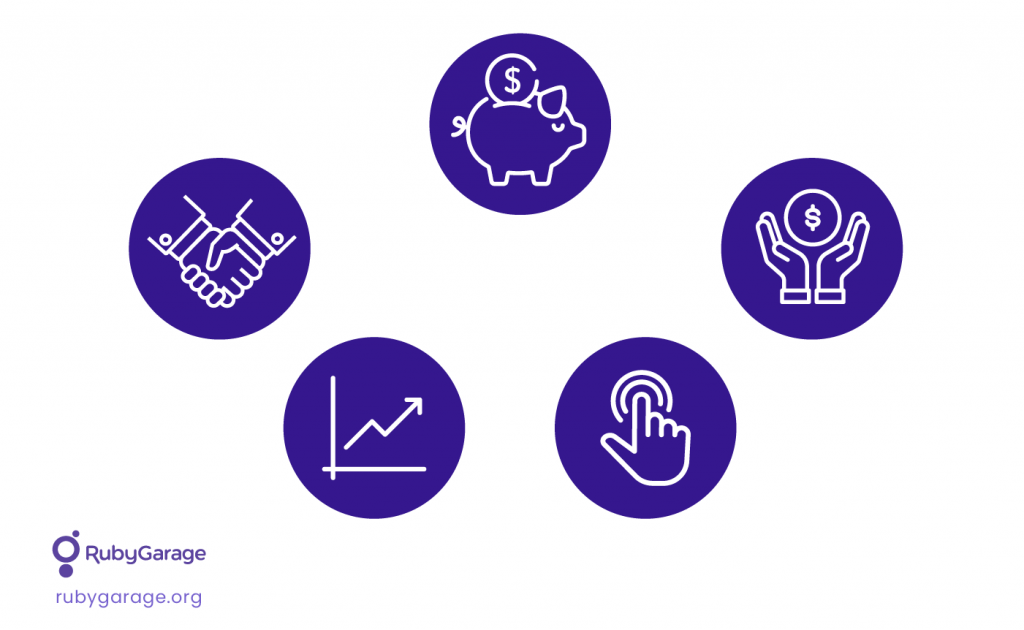While trying to outrun competitors, entrepreneurs often stuff their digital products with bright animations, diverse features, and stunning ads, but forget about the user experience (UX). But without a thoughtful UX design, your users won’t be able to appreciate all the benefits of your website or app.
Nowadays, UX design is valued and included in the software development process. Still, some entrepreneurs order web design services and wonder why so much attention is paid to the UX. Let’s look at six reasons why it’s worth investing in your UX.
- Reduce development costs
UX design is a complex task that includes research, design, testing, and enhancement. All this is done to fully meet customers’ needs. One of the main deliverables of a UX design service is a product prototype, which helps to reduce the cost of development.
First, a prototype allows you to precisely estimate the cost and time for development so you know in advance what budget you should prepare and can stick to it.
Second, during the design stage, you should define all key features and show how they will look in your product, create the users’ full path and ensure all your users’ goals are achievable. Thus, you won’t keep adding features during development that are unnecessary but still money- and time-consuming.
Third, the prototype is a subject for testing. Even user testing is applied during UX design to ensure the product meets your users’ expectations and is easy to navigate.
- Increase revenue
Have you ever wondered why people constantly prefer the same service? Yes, the answer is UX design. Users want to achieve their goals as quickly and easily as possible, and UX design helps them do that.
The easier and faster users can achieve their goals, the more users are likely to go to the final stage. Moreover, UX design can remind users about the target action if they keep thinking for a while.
Navigation should be intuitive and user-friendly so that no question arises about how to use your product or what to do next.
Calls to action should be clear and visible so users always remember what they want to do: subscribe to your newsletter, request a consultation, view related products.
Finally, there should be as few steps as possible to reach the target action. All of these aims can be achieved with UX design.
- Motivate user interaction
Every website or app is first about content. Content — whether in the form of images, videos, or text — is what informs your users and makes them perform the target action.
UX design tends to engage users in the interaction with a product and stimulate them to perform a target action, such as liking a post, watching a video, reading a product description, or viewing more items in a shop.
At this point, personalization matters a lot. Personalization is an instrument UX designers use to engage the audience. The simplest example of personalization is the “you might also like” section on an ecommerce page, which suggests items to a user based on their previous searches.
- Increase customer loyalty
The positive experience your users get from a strong design helps to boost user retention. Satisfied users tend to return and become more loyal to your service or product.
Creating a customer journey map helps you ensure that the whole user journey is to your customers’ satisfaction. It helps you find and eliminate all bottlenecks the user might face, making their path even easier and more pleasant. The other aim of a customer journey map is to build empathy by understanding the emotional state of your users at each step. This also helps you make the user journey more comfortable, leading to higher customer retention and loyalty.
- Lead to word of mouth
As you can see, the right UX builds a strong connection between the product and the user — but that’s not all. It also facilitates the advertising of your product by one of the oldest marketing channels: word of mouth.
When users like a service or product, they tend to share it with others, and the right UX design helps them do so. Ask your web design company to support social sharing so users can comfortably share your product with others by clicking a link or an icon. Moreover, the design can not only allow people to share but can engage them with bright icons and clear CTAs.
- Save resources
The most critical value of UX design is that it helps you validate your product before investing all your resources. Thanks to user testing of a prototype, you can ensure that features are interesting for users and that the product itself is useful and has demand.
This way, you can start development after proving the product’s viability and reducing the costs for unnecessary features or user paths.
Moreover, an intelligent UX design helps you wisely allocate resources including time, money, and people. Thus, you won’t waste resources on unnecessary work or specialists who stay idle while some deliverables are not ready or a hypothesis is being proved.
Summing up
While UX design is less expensive than development, it helps you save on developing unnecessary features, allocating resources in the wrong way, or making a product that’s inconvenient for users and then changing it after the release. Moreover, it helps you retain customers, increase their loyalty, and facilitate social sharing. Finally, UX design helps increase your company’s revenue by making your users’ experience comfortable and enjoyable.


